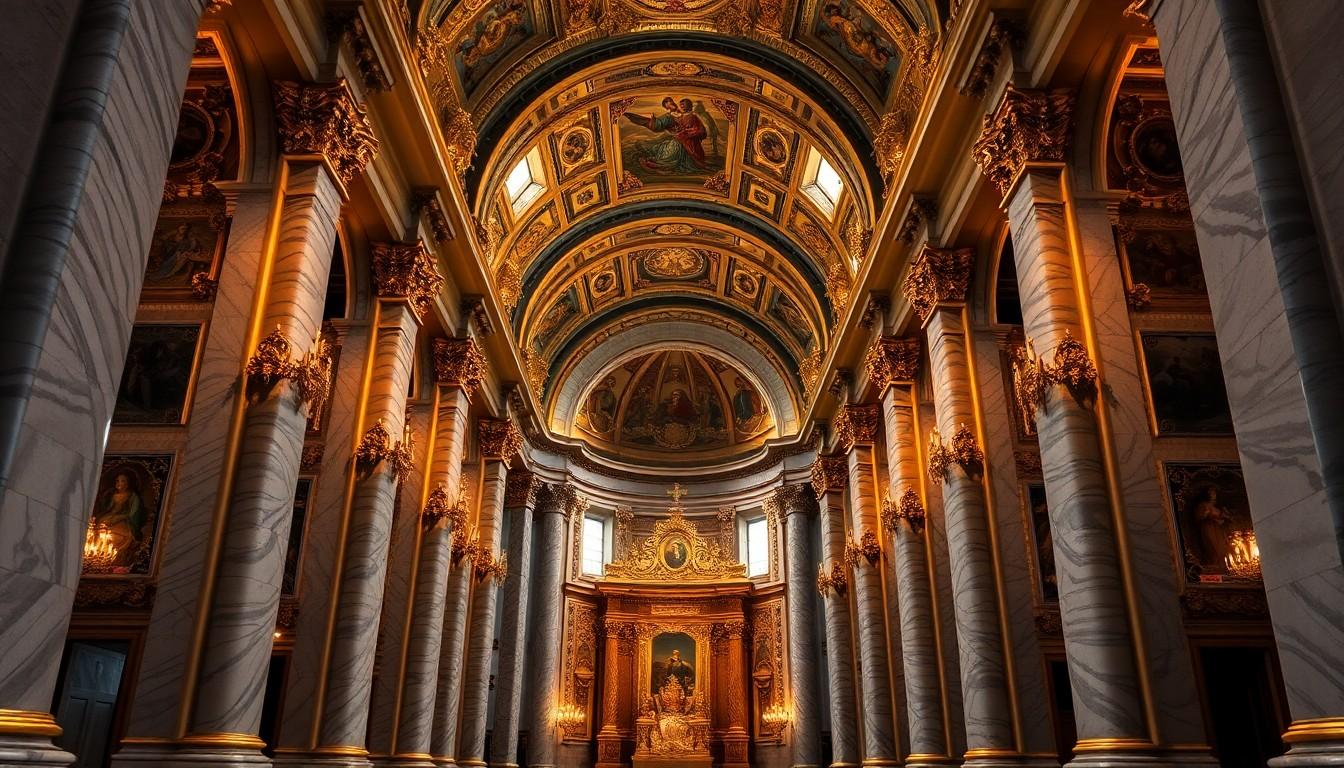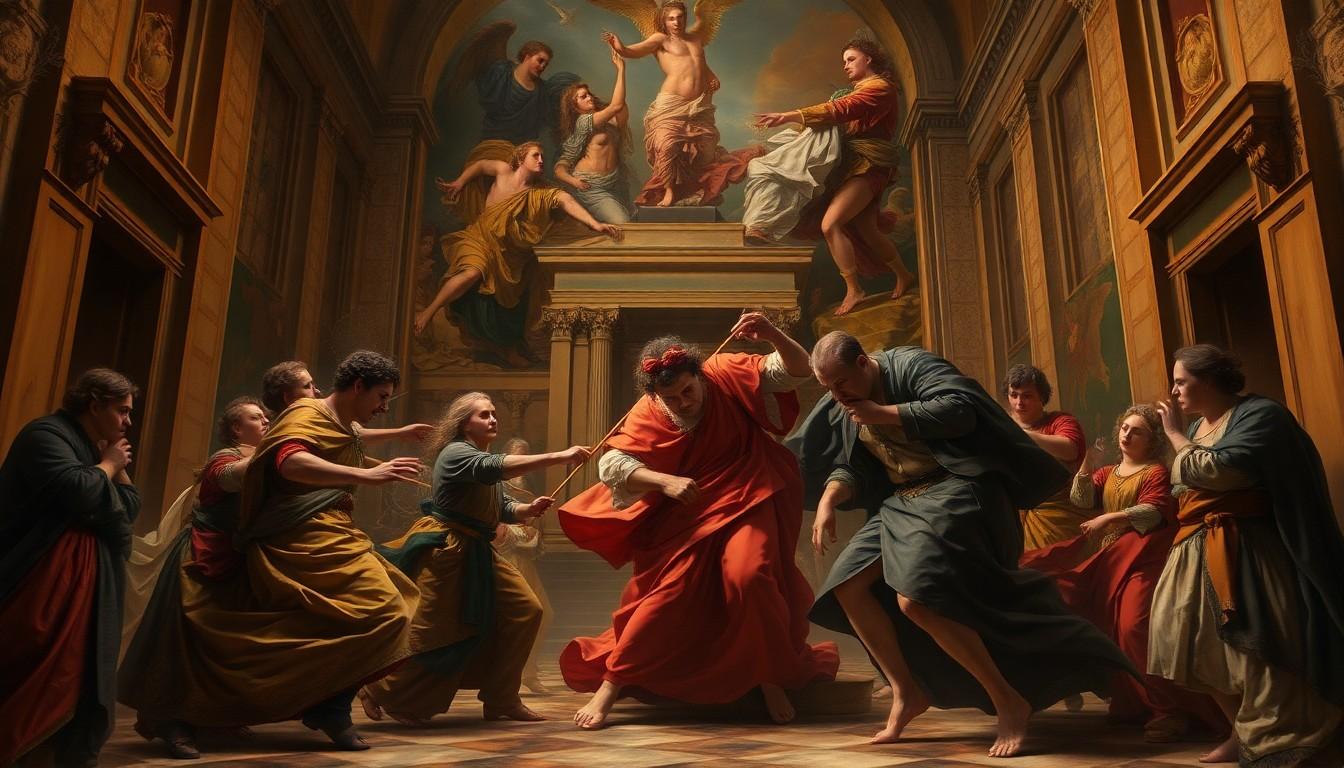Baroque art bursts onto the scene like a fireworks display at a quiet dinner party, captivating audiences with its extravagant flair and dramatic flair. This artistic movement, which flourished in the 17th century, took boldness to a whole new level, showcasing intense emotions and intricate details that can leave anyone breathless—seriously, hold onto your hats!
But who sparked this artistic wildfire? One artist’s genius ignited the passion of countless Baroque creators. With a brush in hand and a flair for the theatrical, this master laid the groundwork for a movement that would inspire generations. Get ready to dive into the world of Baroque art and discover the visionary whose influence still echoes through the halls of art history.
Baroque Art was Extravagant and Dramatic. Which artist was an Inspiration to Later Baroque Artists?
Baroque art originated in the early 17th century. It distinctly emphasizes grandeur, tension, and emotional intensity. Artists incorporated realistic perspective, dramatic lighting, and rich colors to enhance their works. The movement showcases religious themes, mythological subjects, and dynamic compositions, fostering a profound emotional connection with the viewer.
Prominent techniques in Baroque art include chiaroscuro, the use of light and shadow to create depth. Artists frequently employed tenebrism, characterized by stark contrasts between light and dark, highlighting key subjects. This technique added a sense of drama and movement to compositions.
Notable examples of Baroque art can be found in the works of Caravaggio. His innovative approach significantly influenced the Baroque style, inspiring various artists. His emphasis on naturalism and emotional expression defined the era. Other artists embraced similar themes after encountering his works, leading to a proliferation of dramatic and extravagant styles.
Architecture also flourished during the Baroque period. Magnificent structures such as St. Peter’s Basilica in Vatican City exemplify this grandeur. Ornate detailing and bold sculptures reflect the artistic innovation of the time. Decorative arts, from furniture to textiles, mirrored the same intricate designs, reinforcing the movement’s overall extravagance.
Baroque art showcases a dynamic interplay of light, emotion, and intricate detail. Artists and architects contributed to a lasting legacy through their masterful works. This vibrant movement not only captivated audiences of its time but also laid the foundation for future artistic explorations.
Characteristics of Baroque Art
Baroque art encompasses unique traits that distinguish it from preceding movements. This style radiates opulence and emotional resonance, both of which define its visual language.
Extravagance in Baroque Art
Extravagance represents a hallmark of Baroque art. Artists embraced lavish details and intricate designs to evoke feelings of awe. They employed flowing forms and lavish ornamentation, showcasing their technical prowess. Observers noted the use of grand materials such as marble, gold leaf, and rich textiles. This meticulous attention to detail invited admiration and established a sense of grandeur. St. Peter’s Basilica stands as a prime example of this opulence, with its richly decorated interior and soaring ceilings. Such extravagance aimed to inspire reverence and elevate the viewer’s experience.
Dramatic Elements of Baroque Art
Dramatic elements permeate Baroque art, creating intense emotional responses in viewers. Artists utilized high contrasts of light and shadow to create a sense of drama. Techniques like chiaroscuro and tenebrism heightened the visual impact, drawing attention to key figures and actions. Movement in compositions captures dynamic moments, often depicting tension and action. This sense of urgency reflects the emotional intensity characteristic of the era. Renowned works, such as Caravaggio’s interactions of light and shadow, illustrate these principles vividly. Through these dramatic devices, Baroque artists engaged their audiences on a profound emotional level.
Key Artists of the Baroque Period
Baroque art flourished through the contributions of various artists. One such influential figure was Caravaggio, whose innovative techniques shaped the movement.
Michelangelo Merisi da Caravaggio
Michelangelo Merisi da Caravaggio played a crucial role in the development of Baroque art. His exceptional use of chiaroscuro created striking contrasts of light and shadow, drawing viewers into his scenes. Caravaggio’s focus on realism and naturalism infused his works with emotional intensity. Iconic pieces like “The Calling of Saint Matthew” showcased his ability to depict human drama and spirituality. Artists of the Baroque period widely recognized Caravaggio as a groundbreaking talent.
Influences of Caravaggio on Later Baroque Artists
Caravaggio significantly influenced a generation of Baroque artists. His dramatic light effects and realistic portrayal of figures inspired contemporaries and future artists alike. Artists such as Peter Paul Rubens and Artemisia Gentileschi adopted his techniques to enhance the emotional depth in their paintings. The theatricality present in Caravaggio’s work encouraged others to explore similar themes of drama and movement. This impact established a stylistic foundation that characterized Baroque art across Europe.
Notable Baroque Artworks
Baroque artworks exemplify the extravagant nature of the movement, showcasing a variety of themes and techniques. Many pieces convey emotional depth, capturing dramatic moments through the use of vivid colors and striking contrasts.
One significant artwork is Caravaggio’s “The Calling of Saint Matthew.” This painting is renowned for its intense chiaroscuro, illustrating a moment of divine intervention with remarkable realism. Many viewers are drawn to the lighting that directs focus on Matthew, enhancing the scene’s emotional charge.
Another prime example is Peter Paul Rubens’ “The Elevation of the Cross.” This triptych displays dynamic figures and bold color contrasts. The energy and movement in this work reflect the Baroque style’s hallmark, successfully engaging audiences.
Artemisia Gentileschi’s “Judith Slaying Holofernes” represents a powerful narrative through strong character portrayals. The dramatic lighting and vivid detail create a visceral experience that places the viewer at the heart of the action.
The architectural marvel of St. Peter’s Basilica stands out as an emblem of Baroque grandeur. This structure combines bold sculptures and intricate designs, showcasing the artistic ambitions of the time.
Each artwork carries profound themes and profound emotional impacts, revealing the depth of Baroque artistry. Artists during this period embraced elaborate details and dynamic compositions, inspiring future generations and transforming art history. These notable works depict not just visual beauty, but also the rich narratives and emotional intensity that defined the Baroque movement.
Caravaggio’s Innovative Techniques
Baroque art’s extravagant and dramatic nature continues to captivate audiences today. Caravaggio’s innovative techniques and emotional depth not only defined the Baroque era but also inspired countless artists who followed. His mastery of chiaroscuro and realism laid the groundwork for a movement that embraced grandeur and intensity. The legacy of Baroque art remains evident in the works of later artists who adopted and adapted these principles. As the movement evolved it left an indelible mark on art history, proving that the emotional connection forged through dramatic expression and intricate detail can transcend time and resonate with viewers across generations.


